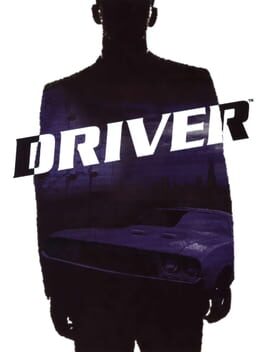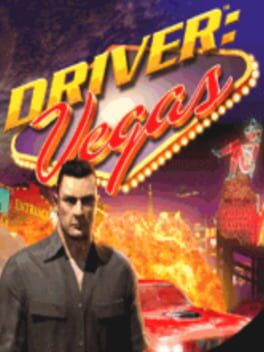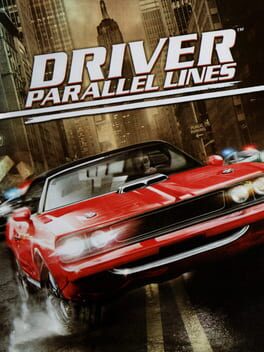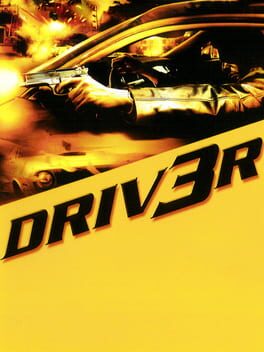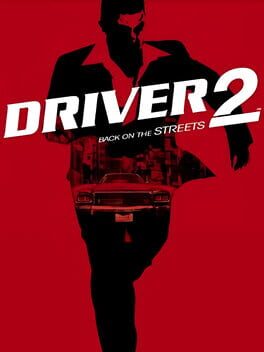

The player is John Tanner, an undercover cop who try to take advantage of his own excellent driving skill in order to infiltrate a criminal organization. In the storyline, the player has the chance to drive several cars in four american cities (Miami, San Francisco, Los Angeles, and New York), facing many different missions and tasks such as delivering a vehicle without damaging it, eliminating competitors or being the getaway driver in a bank robbery.
Also in series
Reviews View More
I have a strange thing for video games that ask you to do mundane boring things like obeying the rules of the road and stopping at red lights and everything and Driver had a bunch of that so it really spoke to me until it got silly at the end with the appalling Bill Clinton impersonator - actually I can't remember if I just made that up, I don't know.
There is something about Driver that reminds me of a cardboard diorama. Perhaps it is all the detritus littering the back alleys, the twig-like parasols, the stickered feel to some of the shop and house textures, or even the cars themselves which seem to have a thin layer of paper taped around some sort of firm but dentable filler. Florist foam blocks are my choice! It is particularly present when crashing. In lieu of modern day baked-in Unreal engine particle effects, the cars you crash into in Driver give off car-body coloured thin triangles; like pieces of grated cardboard.
As a child, the world and cities of Driver enchanted me. They had a very certain feeling that was unique to them. Bump up a small kerb and you would hear a gentle "thum-omP" sort of sound. Then you had the sun of Driver. Even brought up on the blue sky arcadia of Sega, nothing still quite compares to the sun baked streets of Miami; the games heavily marketed opening city. The vibes were strong. And surprisingly for a relatively empty world (by modern standards), the world felt lived in, even if only by cardboard figurines!
I even remember at the time of the game's pre release demo, that the notion of having back alleys was innovative which is surreal to think about if you are exploring this game from a different generation. Back alleys. A place to place destructible assets so it felt cool to plow through during a chase. Or a narrative tactic to make the cities feel ever slightly more real. I also remember that the back alleys in Driver were also kind of sparse and that the one they had right next to the demo area definitely felt cherry picked. Back alleys as a selling point! I remember feeling giddy many years later when GTA4 had back alleys galore all over its realistic feeling New York map. The map designer learnt it here first.
Learning the cities then became a sort of meta game, not only knowing where the back alleys are, but also tacitly understanding to always take the freeway in Miami as opposed to the narrow one-lane roads as to best avoid police blockades. Gaining 'the knowledge' of these desperate cities immersed you tightly into the character of a criminally employed driver. The different cities this game's veritable lava world, ice world and dungeon world, each with fully exaggerated gameplay differences to explore and learn.
Talking of gameplay, Driver is ostensibly an old school experience. When involved in an early chase of a monorail, you will be surprised at the constant "she got away" fail state even after just pulling out of your apartment and not following the invisible, most efficient driving line. With these failures, your mind is oddly cast forward to the same development company's Stuntman series. Some of the missions in Driver really feel like movie sets with a strict set of directorial buffers and constraints. A poetic rehearsal for a later game indeed. In all, the game hooks you into its way of thinking; to always drive fast, not mind the felony ratings (for the mission timers are too strict to slowball) and to always best utilise your 'knowledge', even if that knowledge is gained on your 23rd restart of a mission.
And because of the baked in difficulty, Driver has a timeless, old school-lean feel. It rarely gets old on you too, just frustrating. Even its stingy later missions or survival mode mini-game just adds to a feeling of a bombastic game of car-based asteroids. An eternal crashing of cardboard upon cardboard.
As a child, the world and cities of Driver enchanted me. They had a very certain feeling that was unique to them. Bump up a small kerb and you would hear a gentle "thum-omP" sort of sound. Then you had the sun of Driver. Even brought up on the blue sky arcadia of Sega, nothing still quite compares to the sun baked streets of Miami; the games heavily marketed opening city. The vibes were strong. And surprisingly for a relatively empty world (by modern standards), the world felt lived in, even if only by cardboard figurines!
I even remember at the time of the game's pre release demo, that the notion of having back alleys was innovative which is surreal to think about if you are exploring this game from a different generation. Back alleys. A place to place destructible assets so it felt cool to plow through during a chase. Or a narrative tactic to make the cities feel ever slightly more real. I also remember that the back alleys in Driver were also kind of sparse and that the one they had right next to the demo area definitely felt cherry picked. Back alleys as a selling point! I remember feeling giddy many years later when GTA4 had back alleys galore all over its realistic feeling New York map. The map designer learnt it here first.
Learning the cities then became a sort of meta game, not only knowing where the back alleys are, but also tacitly understanding to always take the freeway in Miami as opposed to the narrow one-lane roads as to best avoid police blockades. Gaining 'the knowledge' of these desperate cities immersed you tightly into the character of a criminally employed driver. The different cities this game's veritable lava world, ice world and dungeon world, each with fully exaggerated gameplay differences to explore and learn.
Talking of gameplay, Driver is ostensibly an old school experience. When involved in an early chase of a monorail, you will be surprised at the constant "she got away" fail state even after just pulling out of your apartment and not following the invisible, most efficient driving line. With these failures, your mind is oddly cast forward to the same development company's Stuntman series. Some of the missions in Driver really feel like movie sets with a strict set of directorial buffers and constraints. A poetic rehearsal for a later game indeed. In all, the game hooks you into its way of thinking; to always drive fast, not mind the felony ratings (for the mission timers are too strict to slowball) and to always best utilise your 'knowledge', even if that knowledge is gained on your 23rd restart of a mission.
And because of the baked in difficulty, Driver has a timeless, old school-lean feel. It rarely gets old on you too, just frustrating. Even its stingy later missions or survival mode mini-game just adds to a feeling of a bombastic game of car-based asteroids. An eternal crashing of cardboard upon cardboard.
